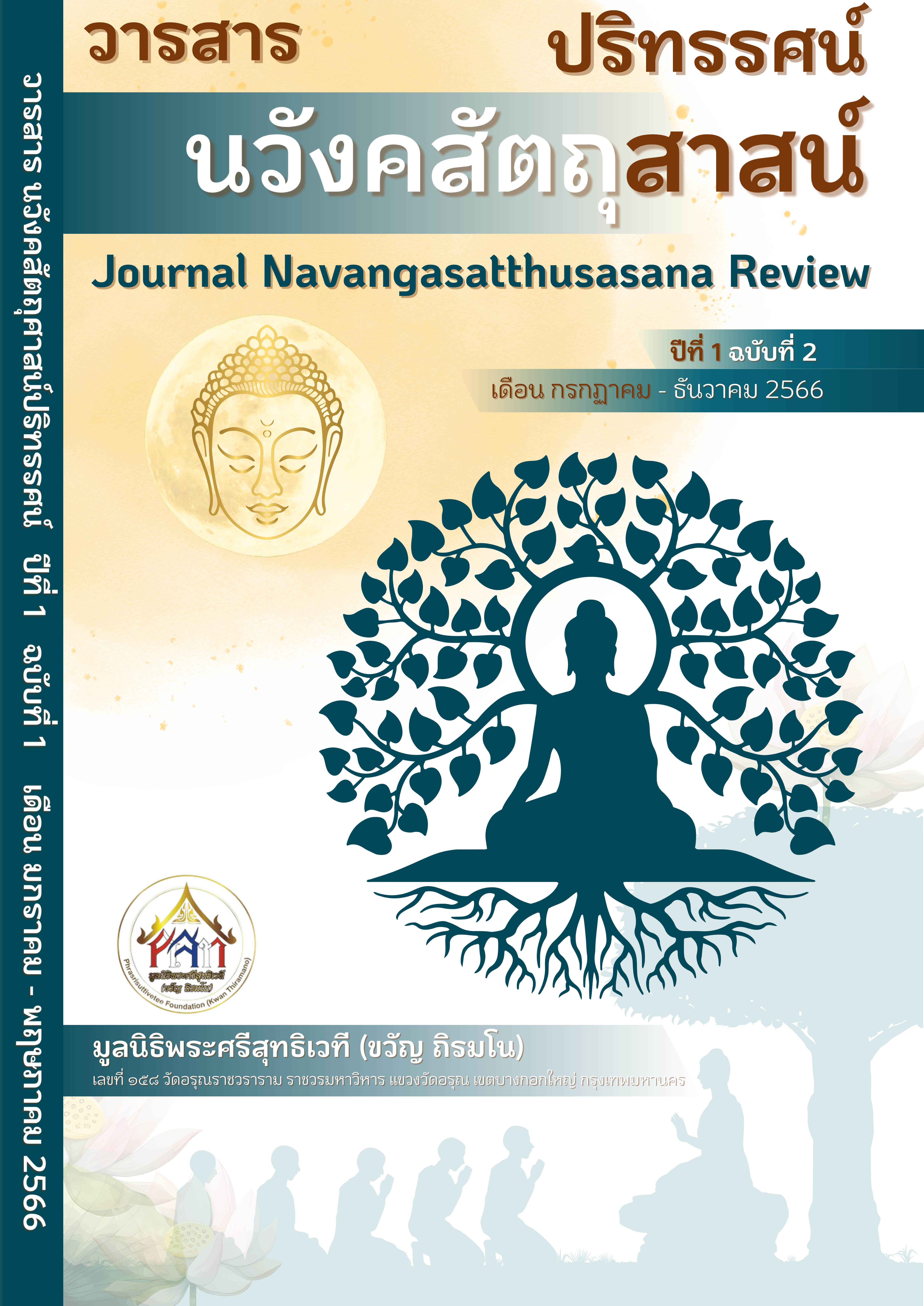The Creating Faith to Achieve Buddhist Wisdom
Main Article Content
Abstract
This article presents the faith principle found in the Buddhist scriptures as a guide to practice, training the mind for the wisdom development. Faith or belief has been with human beings since birth to remove the fear of natural phenomena. For having a mental bond and the safety of life. Faith in something arises according to the individual circumstances. Whether it is belief in the person, Holy thing, mysteries such as spirits, the existence of deities, devils, brahmas, naga deities as well as beliefs in occultism. It was true that the mind acts as the master, the body a servant, therefore mind-based belief is an important factor affecting a person’s behavior. Incorporating beliefs without right knowledge and understanding can lead to improper behavior or wrong practice, in contrast the belief associated with reasonable thought, can lead the behavior and conduct to the path of correctness as if a compass ever-leading to the right direction. Their life has qualified accordingly, developed and not easily lost out of the way. However existing beliefs are generally different from Buddhist beliefs by the reason that right faith of Buddhists must contain the wisdom as well as reasonable deeds based on principle of cause and consequence. Faith without wisdom is therefore a blind belief often leading the be credulity.
The faith cultivation to achieve the wisdom requires two main development’s factors: 1) Paratoghosa or hearing from others, 2) Yonisomanasikāra or clearly determining in the mind, developing into the reasonable thought based on Four Noble Truths and applying the principle of three-fold trainings to cultivate the mind for the right understanding in advance. The faith in Buddhism through the Four Faith teaching is a process enabling the rise of belief with reason respectively. It is an important guideline that leads to the metal training to gain higher wisdom. The force of right faith definitely generates the persistence to drive right action leading to the end of suffering.
Article Details

This work is licensed under a Creative Commons Attribution-NonCommercial-NoDerivatives 4.0 International License.
เนื้อหาและข้อมูลในบทความที่ลงตีพิมพ์ในวารสาร นวังคสัตถุสาสน์ปริทรรศน์ถือเป็นข้อคิดเห็นและความรับผิดชอบของผู้เขียนบทความโดยตรงซึ่งกองบรรณาธิการวารสาร ไม่จำเป็นต้องเห็นด้วย หรือร่วมรับผิดชอบใด ๆ บทความ ข้อมูล เนื้อหา รูปภาพ ฯลฯ ที่ได้รับการตีพิมพ์ในวารสาร นวังคสัตถุสาสน์ปริทรรศน์ถือเป็นลิขสิทธิ์ของวารสาร นวังคสัตถุสาสน์ปริทรรศน์หากบุคคลหรือหน่วยงานใดต้องการนำทั้งหมดหรือส่วนหนึ่งส่วนใดไปเผยแพร่ต่อหรือเพื่อกระทำการใด ๆ จะต้องได้รับอนุญาตเป็นลายลักอักษรจากวารสาร นวังคสัตถุสาสน์ปริทรรศน์ก่อนเท่านั้น
References
พระครูสมุห์อินทร์วงศ์ อิสฺสรภาณี (วงค์ไชยคำ). “พระเมตไตยพุทธเจ้า: แนวคิด ความเชื่อและอิทธิพลต่อสังคมไทย”. ดุษฎีนิพนธ์พุทธศาสตรดุษฎีบัณฑิต. บัณฑิตวิทยาลัย: มหาวิทยาลัย
มหาจุฬาลงกรณราชวิทยาลัย, 2556.
พระพรหมคุณาภรณ์ (ป.อ. ปยุตฺโต). พจนานุกรมพุทธศาสตร์ ฉบับประมวลธรรม. พิมพ์ครั้งที่ 25. กรุงเทพมหานคร: สำนักพิมพ์ผลิธัมม์, 2556.
_________. พจนานุกรมพุทธศาสน์ ฉบับประมวลศัพท์. พิมพ์ครั้งที่ 27. กรุงเทพมหานคร: สำนักพิมพ์ผลิธัมม์, 2556.
_________. พุทธธรรม ฉบับเดิม. พิมพ์ครั้งที่ 24. นนทบุรี: โรงพิมพ์เพิ่มทรัพย์การพิมพ์, 2553.
พระมหาดนัย ธมฺมาราโม. “วิเคราะห์เรื่องศรัทธาในพระพุทธศาสนาเถรวาท”. วารสาร มจร.
สังคมศาสตร์ปริทรรศน์. ปีที่ 6 ฉบับที่ 2 (ฉบับพิเศษ) (เมษายน-มิถุนายน 2560).
มหาวิทยาลัยมหาจุฬาลงกรณราชวิทยาลัย. พระไตรปิฎกภาษาไทย ฉบับมหาวิทยาลัยมหาจุฬา
ลงกรณราชวิทยาลัย. กรุงเทพมหานคร: โรงพิมพ์มหาจุฬาลงกรณราชวิทยาลัย, 2539.
_________. อรรถกถาภาษาไทย ชุด 55 เล่ม. กรุงเทพมหานคร: โรงพิมพ์มหาจุฬาลงกรณ
ราชวิทยาลัย, 2553.


